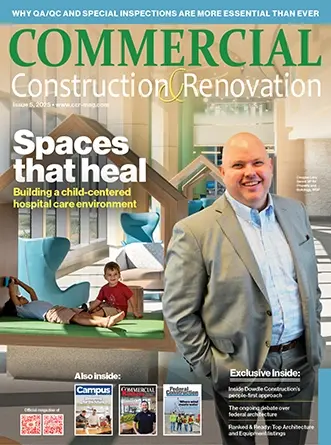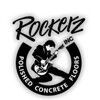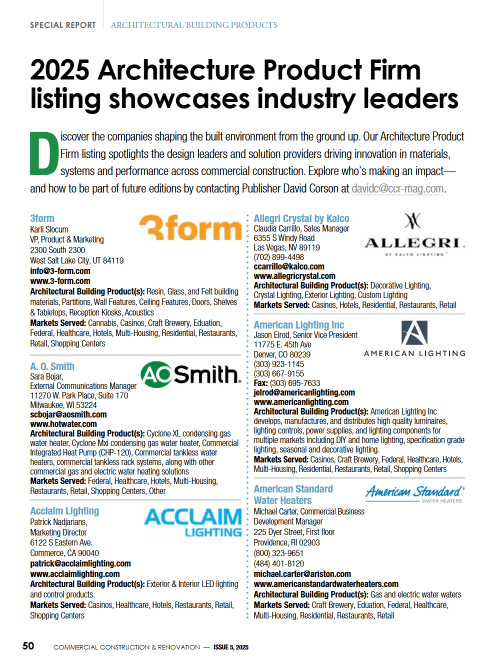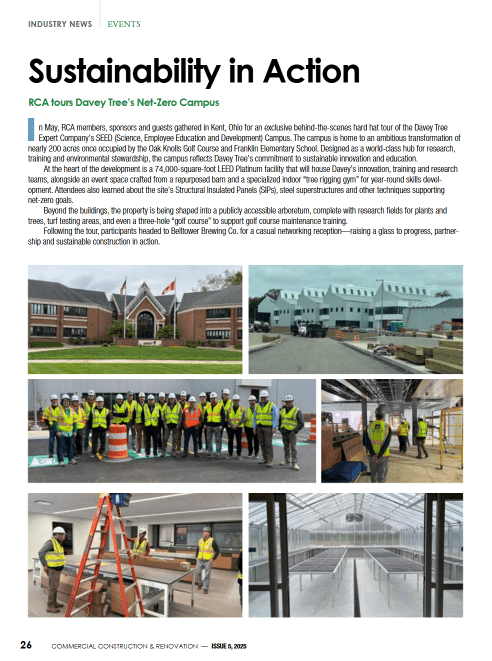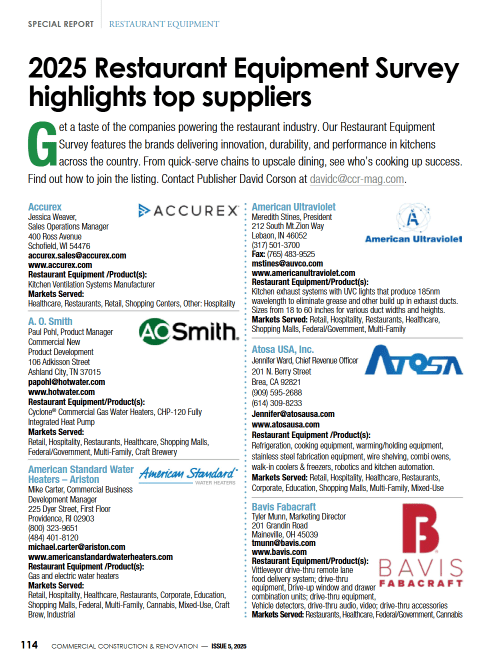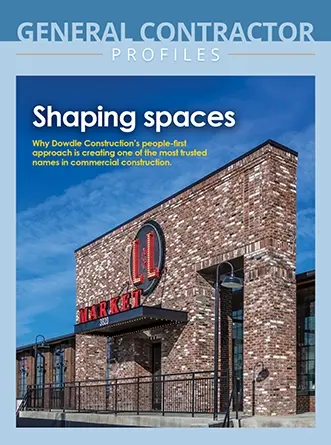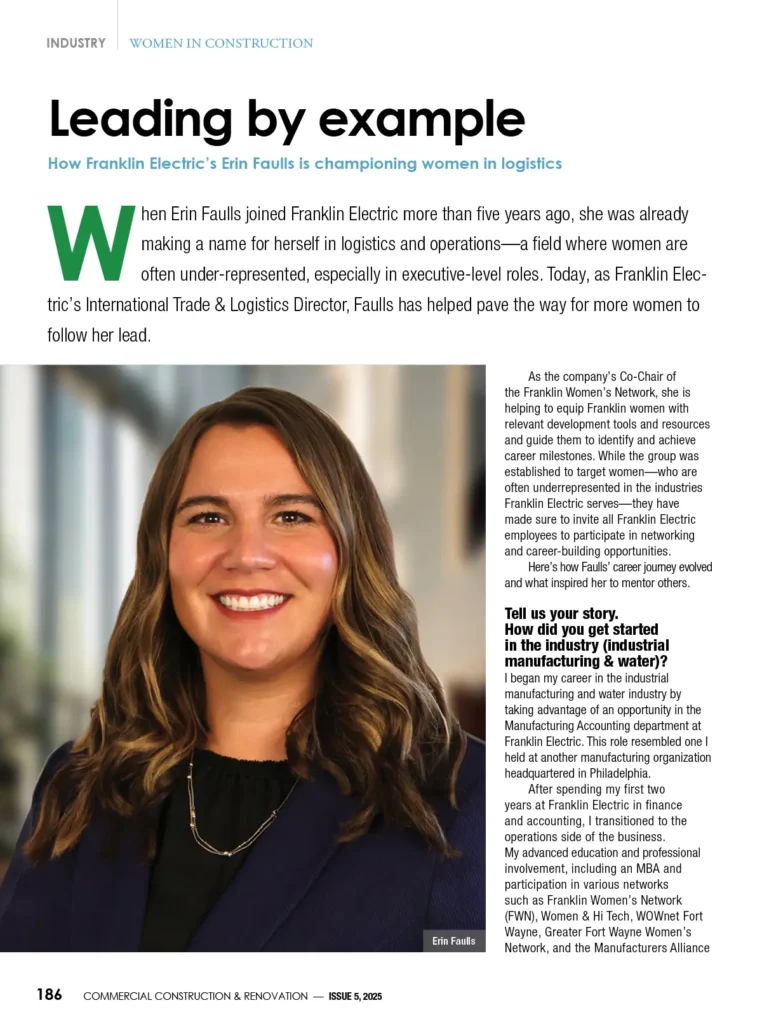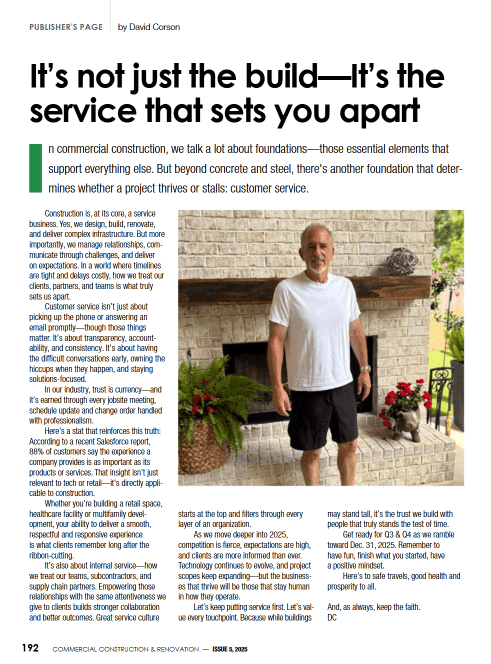The importance of investing in quality floor finishes can’t be understated. Flooring accounts for 15% to 20% of the finished surfaces within a building and is the only interior finish occupants are constantly in direct contact with. Not only does flooring endure higher amounts of wear and tear than other finishes, but its ubiquitous nature also lends credence to the quality and ambience of indoor spaces. In other words, high-quality flooring forms the basis of an aesthetically pleasing, well-designed space, while low-quality finishes can detract from a potentially good first impression — and incur higher maintenance and more frequent replacement costs.

University of the South Dupont Learning Commons Photo by Buck Butler
Additionally, the manufacture and composition of flooring materials directly impacts occupants’ physical well-being. High-quality materials can mitigate safety and accessibility issues while supporting environmental sustainability.
When comparing material and installation costs, some floor finishes might seem like attractive options because they are less expensive up front. However, their lower initial cost is often an indicator of lower quality, which can ultimately lead to increased maintenance, repair and replacement costs quickly stacking up higher than the upfront cost of higher quality finishes.
Floor finishes that are homogeneous, meaning they are composed of a single material, can withstand more diligent cleaning practices and maximize the functional life of the finished floor. The properties of homogeneous flooring finishes are inherent throughout the material, which contributes to consistency and longevity.
The thickness of a floor finish can also contribute to longevity. The thicker a product or its backing, the more likely it will be able to defend against the crush of foot traffic. Thicker materials can also help support ergonomic and acoustic goals.
Increasing an established flooring allowance by $1 to $2 per square-foot is usually sufficient to accommodate durable homogeneous flooring options. Flooring typically accounts for 1.5% of a new construction budget and around 5% of a renovation budget. Increasing the flooring allowance by a few dollars per square-foot can buy owners a higher quality product yielding double the life expectancy with reduced maintenance and repair costs without significantly impacting the construction budget.
Solution-dyed carpet
Solution-dyed yarns are recommended for carpeted areas. During the manufacturing process of solution-dyed carpet, the color is added to the carpet fiber components while they are in a liquid state, prior to being manufactured into the fibers that make up the finished surface of the carpet.
Alternatively, carpets that are colored after the fibers are manufactured and woven are known as piece-dyed carpet. These two approaches may look similar to the untrained eye, but on a molecular level, the piece-dying process leaves a significant portion of the fibers uncolored — like a radish — which makes the product more susceptible to fading.
Solution-dyed carpeting’s homogeneous fiber composition makes it much more stain resistant due to its lack of empty dye sites. Solution-dyed fibers can also withstand rigorous cleaning and intense lighting with little detriment to the quality of the carpet. Investing in an integral cushion backing can also extend the lifespan beyond what a typical hard backed carpet can provide. The cushion between the woven fibers and the subfloor will defend against the wear and tear of foot traffic by absorbing the “crush” instead of the fibers taking the brunt of the weight.

Terrazzo’s durability combined with a quality walk-off system makes for an aesthetically pleasing low-maintenance floor selection.
Porcelain tile
Porcelain tile is the best choice for areas that call for ceramic flooring. Porcelain is made up of a more refined clay mixture that is fired at higher temperatures than standard ceramic tile, which produces a denser and more durable material. Standard ceramic tiles often contain a base with subsequent top layers, but porcelain is a homogeneous material that doesn’t require additional layers.
Porcelain’s density makes it less porous than other ceramic materials, which aids its stain resistance and ability to hold up in high moisture environments. It’s easy to maintain, with a long lifespan that can be extended through a low-maintenance cleaning regimen, especially when paired with an epoxy grout. These grouts are more stain, bacteria and chemical resistant than cementitious options.
Poured in place: Epoxy and terrazzo
When considering poured-in-place flooring finishes, the recommended material depends on the function of the room.
In restrooms, a poured epoxy resin system (not to be confused with epoxy paint coating) is the best choice to maintain the most sanitary environment. It can be sloped to a floor drain and troweled 6 inches up walls to create a seamless floor basin. Additionally, various levels of grit can be added to poured epoxy to provide solid footing and slip resistance for occupants, even when the floor is wet.
For areas where a higher-end visual appeal is desired, terrazzo with an epoxy matrix (or resin type material) is an excellent finish. Terrazzo is incredibly durable and can last more than 50 years while maintaining its original aesthetic quality. The maintenance requirements are minimal and it can stand up to a rigorous cleaning regimen, as well as foot traffic.
Resilient rubber
Many owners or designers lean toward luxury vinyl tile (LVT) when considering resilient floor finishes due to the low initial cost and ease of replacement, but its construction and composition can be problematic down the road. The multiple layers of different materials that comprise LVT leave more room for the product to fail when compared to a homogeneous material, especially when the installation quality is poor.
Rubber flooring is a superior homogeneous finish that requires little maintenance after installation. Unlike other resilient options, rubber can stretch and expand into itself to move with the building over the years as it naturally shifts.
Rubber flooring is highly durable and can last up to 50 years with a minimal cleaning approach. It doesn’t absorb water or liquids, is slip-resistant, shock-absorbing and acts as a natural acoustic dampener, making it an excellent choice for areas where manual labor or physical activity takes place.
Various blends of recycled natural and synthetic rubber flooring can contribute to offsetting a building’s carbon footprint, as well.
Walk-off mats
The most important investment in the lifespan of a building’s floor finishes is a walk-off flooring system. Integrated walk-off mats and carpet tiles offer a non-slip surface that stands up to the high traffic expected in entryways. Walk-off products trap dirt from occupants’ shoes and can wick away moisture as they enter the building, which helps keep the rest of the interior clean and protects floor finishes in other areas.
Like with wall-to-wall carpets, walk-off options that are solution-dyed offer similar benefits of durability and resistance to staining and fading.
Though the flooring finishes highlighted in this article might yield a higher upfront cost, the wear and tear incurred through typical use warrants making a more substantial investment in top-quality finishes. By selecting low-maintenance materials that have decades-long lifespans, the long-term returns far outweigh the initial costs.
Elisa Walker, IIDA, NCIDQ, is the Lead Interior Designer for the Higher Education and Library Studios of McMillan Pazdan Smith, a regional, studio-based design firm with offices in Greenville, Charleston, Columbia and Spartanburg, South Carolina; Asheville and Charlotte, North Carolina; and Atlanta, Georgia. She can be reached at ewalker@mcmillanpazdansmith.com.

